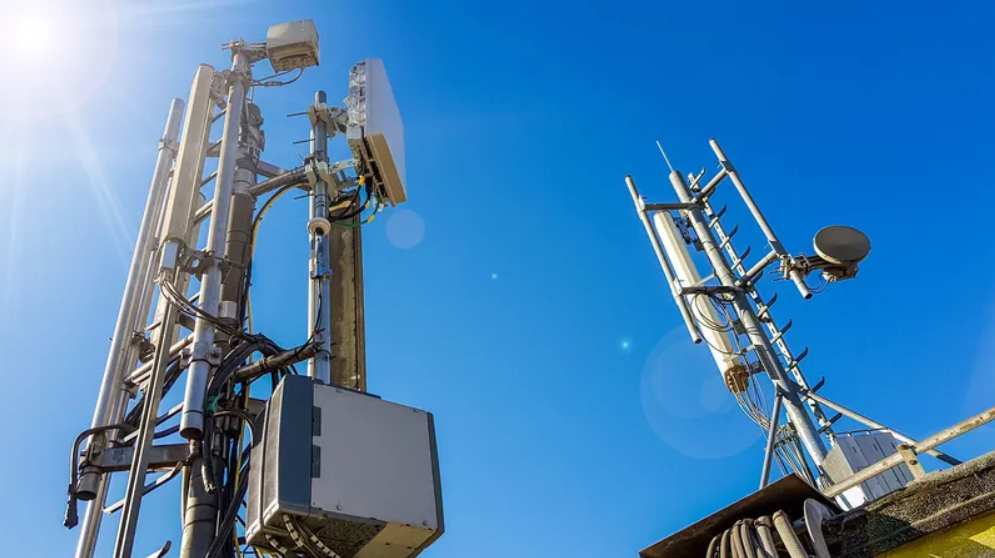October 23, 2025
.jpg)
Unbreakable connectivity has become the backbone of modern business. Whether you are running a manufacturing floor, managing a logistics hub, or operating across multiple campuses, your ability to stay connected directly impacts productivity, efficiency, and customer satisfaction.
Yet, many organizations still rely on Wi-Fi or public cellular solutions that were never designed for mission-critical operations.
Dropped connections, congestion, security vulnerabilities, and compliance gaps are daily frustrations that cost time and money.
For enterprises that cannot afford to be disconnected, Private Cellular Networks (PCNs) powered by LTE and 5G are the next step. These dedicated networks provide reliability, security, and control that traditional systems simply can’t match.
At Metro Wireless, we’ve developed a Private Cellular Network Discovery Checklist— a practical tool that helps businesses evaluate their current connectivity challenges and readiness for private LTE/5G.
This blog will walk you through why private cellular networks matter, how Metro Wireless builds them, and how the checklist can help you take the first step toward a better connectivity future.

For years, Wi-Fi has been the go-to solution for enterprise connectivity. Public cellular has also improved dramatically, but both technologies still share major limitations in large-scale or specialized environments. Businesses often face:
These limitations aren’t just frustrating— they’re costly. Downtime, lost productivity, and compliance violations can quickly add up. That’s why forward-thinking enterprises are shifting to private LTE and 5G networks that deliver more than just connectivity— they deliver control.
Private LTE and 5G networks combine the speed and reliability of carrier-grade technology with the customization and control enterprises need. Unlike public networks or shared Wi-Fi, a private cellular network provides:
In short, a private cellular network is designed around your business, not the other way around.

This checklist is designed to help enterprises assess the need for a private cellular network (using LTE or 5G technology) based on common pain points, business requirements, and operational challenges.
Understanding where connectivity falters is the first step toward justifying the investment in a dedicated Private LTE solution.
Pinpointing the exact physical locations and causes of signal loss will determine the precise topology and radio needs of your new network.
Quantify the financial and operational risk of these failures to calculate the immediate return on investment for high-reliability pLTE.
A dedicated spectrum and guaranteed quality of service (QoS) are essential to ensure that a massive influx of devices doesn't choke essential operations.
Confirming regulatory requirements upfront will mandate an on-premises core infrastructure where all sensitive data is handled entirely within your control. Note: Public networks and Wi-Fi may not provide on-premise control or SIM-based authentication needed for compliance, unlike private cellular setups.
A comprehensive inventory of all endpoints, from simple sensors to automated guided vehicles (AGVs), is necessary to confirm their inherent private cellular compatibility or to budget for new, purpose-built IoT devices.
Capturing this detailed implementation data upfront will save you time as you plan your private cellular network deployment. This list is the key element to begin scoping a private cellular network, and is what we use with all prospective clients when planning our Private Cellular Networks.
Accurate scale diagrams are critical for the initial Radio Frequency (RF) design, directly influencing the number of access points and overall hardware required.
A precise device count, especially the peak number of simultaneous connections, is essential for sizing the core network and ensuring adequate bandwidth provisioning.
The physical location dictates which specific radio spectrum is legally available for use and helps identify potential outside signal interference that must be factored into the design.
Defining your top use cases ensures the network design prioritizes the correct metrics, such as ultra-low latency for automation or maximum capacity for data-heavy applications.
Knowing the structural elements and mounting surfaces guides the physical placement of the antennas, optimizing signal coverage while minimizing installation complexity.
Understanding dense materials like concrete or metal is vital for predicting signal loss and attenuation, directly affecting the placement and power levels of all radio equipment.
Thorough compatibility checks mitigate risks later in the project and determine if a smaller-scale proof-of-concept (PoC)is necessary before full deployment.
A clear timeline, including all necessary integration and testing phases, is needed to map out resource allocation and define success metrics for the entire project lifecycle.
Our Metro Wireless Discovery Checklist was created to simplify the process of evaluating whether your business is ready for a private LTE or 5G deployment.
By downloading and filling out the checklist, you’ll gain clarity on your connectivity needs and provide Metro Wireless with the essential details required to design a network tailored to your business.
From coverage planning to compliance requirements and integration goals, the checklist captures everything needed to build a clear roadmap.
Instead of guessing where your network is falling short, the checklist helps you document pain points, operational requirements, and environmental factors that shape the right solution.

Building a private cellular network doesn’t have to be complex. Metro Wireless follows a structured process that gets your system up and running quickly— often in a matter of weeks, not months.
We start by understanding your use cases, business priorities, and connectivity challenges. This ensures your network isn’t just functional, but truly strategic.
Using advanced RF planning tools, we analyze your environment, assess spectrum availability, and design a coverage plan that eliminates gaps and interference.
Our team prepares a detailed proposal outlining the recommended equipment, costs, and deployment approach. Scalability, compliance, and ROI are all factored in from the start.
Once approved, Metro Wireless provisions and installs the network with minimal disruption to your operations. Every installation includes testing, optimization, and staff training.
Your private cellular journey doesn’t end at deployment. We provide continuous remote monitoring, security updates, and proactive support to ensure your network grows with your business.
This end-to-end process ensures your connectivity investment delivers lasting value.

Private cellular networks require expertise in spectrum management, RF design, and enterprise integration. Metro Wireless specializes in building tailored LTE and 5G solutions that address the unique challenges of each client.
What sets us apart?
With Metro Wireless, you don’t just get connectivity— you get a partner committed to your success.
If unreliable Wi-Fi or congested public cellular is slowing down your operations, it’s time to explore private LTE or 5G.
Our Metro Wireless Private Cellular Network Discovery Checklist makes it easy to evaluate your needs and prepare for the next stage of connectivity.
Download the checklist, review your current challenges, and let our team show you how private cellular can transform your business.
You’re closer than ever to unlocking connectivity that delivers performance, security, and control where it matters most.
Ready to get started? Contact Metro Wireless today at sales@metrowireless.com.

Tyler Hoffman
CEO
